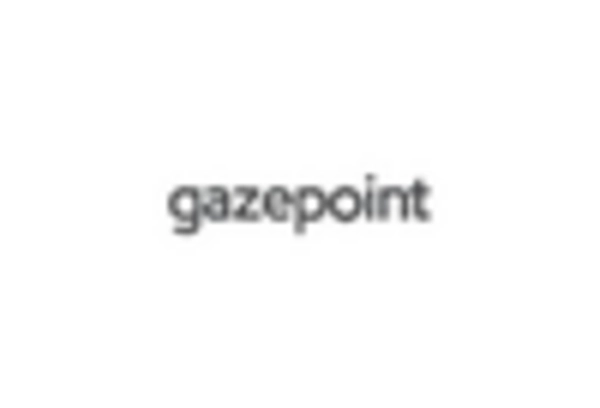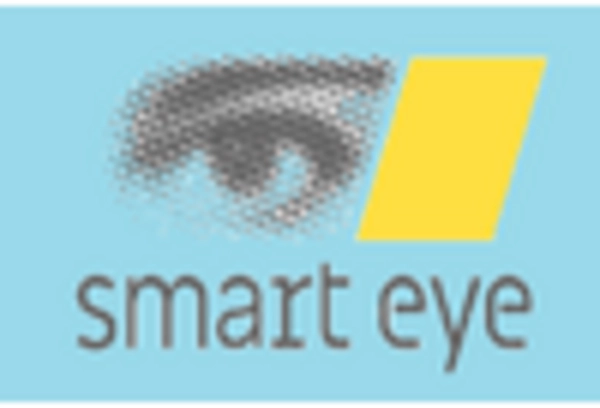Eye Tracking Size
Market Size Snapshot
| Year | Value |
|---|---|
| 2024 | USD 2.51 Billion |
| 2035 | USD 5.2 Billion |
| CAGR (2025-2035) | 6.84 % |
Note – Market size depicts the revenue generated over the financial year
The Eye Tracking Market is projected to grow from $2.5 billion in 2024 to $5.2 billion in 2035. A CAGR of 6.84% from 2025 to 2035. Eye tracking technology will have a growing demand in all industries. Eye tracking is increasingly used in medical, gaming, and market research. Its main use is to improve the user experience and to collect useful information about consumers. The use of artificial intelligence and machine learning is driving the market. These innovations have made it possible to collect more accurate and more efficient data, which makes eye tracking more attractive to businesses. Companies in this field, such as Tobii AB, EyeTech Digital Systems, and SMI, are investing in research and development, forming strategic alliances, and launching new products to meet the growing demand. Eye tracking is increasingly used in games. Tobii's recent cooperation with the world's largest game companies highlights the versatility of the technology and the many future applications.
Regional Market Size
Regional Deep Dive
Eye-Tracking Market is experiencing considerable growth in different regions, driven by technological developments, growing demand for user experience research, and the integration of eye-tracking in a variety of applications such as gaming, healthcare, and automobiles. Each region has its own characteristics, such as varying levels of technological development, regulatory framework, and cultural attitudes towards data privacy and user interaction. The Eye-Tracking Market is characterized by a strong regional bias, with local players collaborating with global players to increase their capabilities and reach.
Europe
- Europe is at the forefront of eye tracking research, with significant investments from organizations like the European Union's Horizon 2020 program, which funds innovative projects aimed at enhancing user interaction through eye tracking technology.
- The region's strong emphasis on user privacy and data protection, driven by regulations like the General Data Protection Regulation (GDPR), is shaping the development of eye tracking solutions, pushing companies to prioritize ethical data usage.
Asia Pacific
- The Asia-Pacific region is rapidly adopting eye tracking technology in the gaming industry, with companies such as HTC and Sony integrating eye tracking features into their virtual reality headsets to enhance user experience.
- Government initiatives in countries like Japan and South Korea are promoting research and development in eye tracking technology, fostering collaborations between academic institutions and tech companies to drive innovation.
Latin America
- Latin America is seeing a growing interest in eye tracking technology for market research, with companies like Neurons Inc. expanding their operations to provide insights into consumer behavior through eye tracking studies.
- Economic factors, such as fluctuating currency values and varying levels of investment in technology, are impacting the growth of the eye tracking market, leading to a focus on cost-effective solutions tailored to local needs.
North America
- Eye-tracking technology has also been used in the health care sector, in particular in the fields of patient monitoring and rehabilitation, with companies such as Tobii and EyeTech Digital Systems being the main players.
- Recent regulatory changes in data privacy, such as the California Consumer Privacy Act (CCPA), are prompting companies to ensure compliance while developing eye tracking solutions, thereby influencing product design and marketing strategies.
Middle East And Africa
- In the Middle East and Africa, eye-tracking is gaining a foothold in the educational sector. Schools are exploring the use of eye-tracking to enhance the learning experience, supported by the United Arab Emirates’ Ministry of Education.
- Cultural attitudes towards technology adoption vary significantly across the region, influencing the pace of eye tracking implementation, particularly in areas where traditional learning methods are still prevalent.
Did You Know?
“Eye tracking technology can measure not only where a person is looking but also how long they focus on specific areas, providing valuable insights into attention and engagement levels.” — Tobii Technology
Segmental Market Size
The Eye Tracking Market is expected to grow at a CAGR of over 27%, owing to the increasing demand for enhanced user experience in various industries, such as healthcare, gaming, and automotive. The growth is mainly driven by the growing trend of a more unified user experience, which in turn is attributed to the advancements in artificial intelligence, enabling more accurate eye-tracking systems. Furthermore, the regulatory mandates for the implementation of accessible digital solutions have also pushed the demand for eye-tracking solutions. The current market for eye-tracking technology is characterized by a transition from the pilot stage to a commercial deployment stage, where the companies like Tobii and EyeTech Digital Systems are leading the way. The most notable applications of eye-tracking are in the automotive industry, where the systems monitor the driver's attention level to enhance the safety of the drivers. The increasing trend of remote working and virtual collaboration, accelerated by the COVID-19 pandemic, has also increased the importance of eye-tracking in user experience research. Infrared cameras and machine learning are enabling the development of the market, as they are enabling more accurate and real-time data collection for various applications.
Future Outlook
The Eye-Tracking Market is expected to grow significantly from 2024 to 2035. The market size is expected to increase from US$2.51 billion to US$5.20 billion at a CAGR of 6.84%. The increasing adoption of eye-tracking technology in various industries, such as medical, gaming, automobile, and virtual reality, will be the main reason for the growth of the market. Eye-tracking will be widely used in various industries, such as in the medical field, in order to improve the patient’s experience and the efficiency of the operation. Various industries will realize the value of eye-tracking in enhancing the user experience and improving the efficiency of operations, and the penetration rate will rise significantly. By 2035, the penetration rate will be about 25% in the consumer electronics industry. Artificial intelligence and machine learning will be used to improve the accuracy and functionality of eye-tracking devices. Eye-tracking will be used in various industries, such as in the medical field, in order to enhance the patient’s experience. The rising trend towards user-centered design and accessibility in product development will also increase the demand for eye-tracking. The increasing demand for remote work and distance learning will also create a demand for eye-tracking, which will enable more interactive and engaging digital experiences. In order to meet the increasing demand for eye-tracking, the industry must stay agile and continue to develop technologically.















Leave a Comment